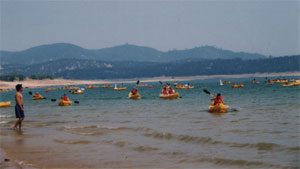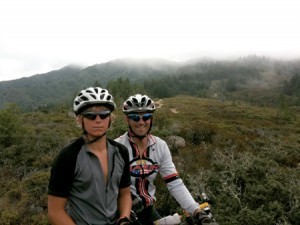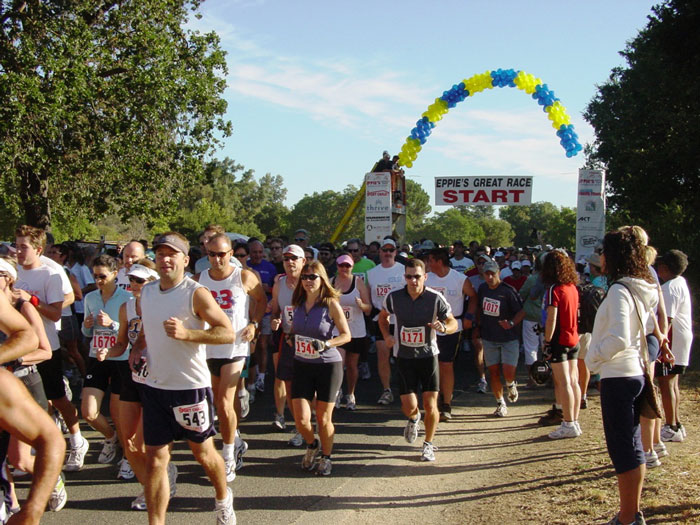- Tahoe’s Nevada Beach Tops the List of Hard-to-Book Campgrounds - 07/17/2024
- Cannabis Watershed Protection Program Cleans Up Illegal Grow Sites - 07/10/2024
- French Fire - 07/05/2024
Story and Photos by Sharael Feist
You’ve been glued to the TV watching the fifth season of Survivor and are craving an adventure of your own, but you don’t want to fly thousands of miles from home or wither away to skin and bones in the process. Don’t worry–there is something that offers challenging physical and mental tasks, requires teamwork and has a rewarding end. 
It’s called adventure racing. There are dozens of races to choose from. Whether you’re looking to compete for 3 hours or 6 days–there’s bound
to be a race that suits your desire. Most races require teams of three to mountain bike, kayak, and run their way to the finish line. Once you’ve narrowed down your decision to one particular race, next comes the training.
Adventure racing is fun, but it is also serious business–not
necessarily recommended for couch potatoes. It can be extremely physically and mentally exhausting if you’re not prepared. So, what do you need to do to get ready for such an event?
Kara Schaad, author of The Complete Guide to Adventure Racing (Hatherleigh Press), recommends having a good aerobic base to start.
“Running is a good way to build aerobic capacity,” she said. “Also, get used to doing a variety of sports–biking, paddling, climbing. Log some miles and don’t skimp on your training–you’ll be sorry on the race course.”
In addition to physical fitness training, Schaad recommends learning how to navigate, which is a requirement of most adventure races.
“Navigation is huge,” Schaad said. “It’s important for everyone on the team to know because it’s easy to make a mistake. Consider entering orienteering competitions.”
For those just starting out, Schaad suggests first trying a sprint adventure race, which usually lasts for about three to five hours.
“This exposes you to the team concept–being able to get across the finish line still friends,” Schaad said. “Start with a sprint race, then move on to a one-day race, then a weekend race–work your way up.”

Another good way to get your feet wet before diving into a competitive adventure race is to attend an adventure race training camp or school.
The Adventure Fitness Training company, based in Santa Monica, California, offers various levels of adventure racing courses that range from a non-stop 48-hour race to six weeks (Saturdays only) of training.
With an average team of five members, the participants might experience things like horseback riding, rope climbing, navigation, swimming, canyoneering, bush whacking, paddling, trekking, and mountain biking. All equipment and food is provided, and there is an awards ceremony at the end of each adventure race.
Owner Tony Molina stresses that safety is of utmost importance. A coach accompanies each team to teach the members how to do each discipline, offer advice, and keep the team safe.
“Before starting a training program with us, each participant undergoes a free evaluation and assessment,” said Molina.
 Next is a goal setting session, which helps Molina and his crew put together a training schedule based on each person’s needs. This schedule will help participants train for a competitive adventure race after leaving the camp.
Next is a goal setting session, which helps Molina and his crew put together a training schedule based on each person’s needs. This schedule will help participants train for a competitive adventure race after leaving the camp.
The price for these programs ranges from about $125 just for the training schedule to $280 per month with personalized training.
The next step up from an adventure race camp would be to compete in a sprint adventure race, like the Hi-Tec Adventure Race Series, which is
held in various locations throughout the U.S.
A sprint adventure race might consist of a 10-mile mountain bike ride, two-mile kayak, five-mile trail run, a roll through the mud pit, climbing a 12-foot wall and various other mystery tasks along the way. Members of Team Hi-Tec, an elite adventure racing team competing for points in order to win the series (and keep/gain sponsors), have advice for newcomers to this field.
Kerstin Weale of Team Hi-Tec suggests running two times a week and biking two times a week. “If you’re bad at something, do more of that during training,” she said. “Learn to communicate, stay calm and read the instructions.” These types of races are much more intense than a longer race, but require less of a time commitment since they are shorter. Jesse Kimball, also a member of Team Hi-Tech, grew up doing triathlons, but enjoys the variety that adventure races have to offer. “You get to mix it up with adventure racing,” Kimball said. “Training is relaxed, more fun. Plus, I get to meet people with a common interest.”
After trying a sprint race, it’s on to a one-day race, like the Balance Bar 24-hour Adventure, which could consist of three-person teams completing a 15-mile kayak, 17-mile trek, and 43-mile mountain bike. The course changes every time, so the teams must be prepared for anything. During the race, the team members can never be more than 100 meters apart at all times.
For races of this length, it is not unusual for there to be a total purse of over $15,000 for elite team winners.
 “These longer races are difficult on the mind and body,” said Schaad, an experience adventure
“These longer races are difficult on the mind and body,” said Schaad, an experience adventure
racer. “You have to take it step-by-step.”
A good tip she has for training for longer races is to carry heavy loads whenever you can. Also, make sure that everyone on the team has the same expectations and are comparable fitness levels. For those ready to take on the ultimate challenge, the expedition-length races are like the Olympics of adventure racing. These grueling events, which last several days, push competitors to the edge of mental and physical exhaustion, and injuries seem like par for the course.
One such race that has garnered a lot of media attention is the Eco Challenge, created by Survivor producer Mark Burnett. This race consists of teams of four competing in a non-stop six to 12-day race over a 300-mile course consisting of things like river rafting, mountaineering, mountain biking, horseback riding, kayaking, ropes courses, and navigation. This is not for the faint of heart.
“Push yourself in the toughest situation you can before undergoing this type of race,” said Nick Moore, and Eco Challenge veteran. “Do an all-night hike, all day paddle, then an all-night bike ride the next night.”
Moore says that the most important part of training for an adventure race is learning to communicate with your team. “Anybody could do the Eco Challenge if they really wanted to,” Moore said. “I don’t care what kind of an athlete you are, what kind of shape you’re in–the body can only go so long, so hard, do so much. The tough part of adventure racing is the mental part and communicating with your team. Be flexible, trust, and adapt. Your life is on the line.”
No matter what your current exercise routine is, you’ll want to start a program catered specifically towards the disciplines required for adventure racing. Most adventure racers workout five to six days a week, varying their workouts based upon what types of events they’ll be doing in a particular adventure race. For a sample training schedule, check out The Complete
Guide to Adventure Racing. Chapter eleven covers training in detail, with weekly schedules for adventure athletes to follow.
Whether you’re new to exercise or an experienced athlete, eighteen or eighty, looking for a weekend escape or really want to push your limits–adventure racing has something to offer anyone that chooses to accept the challenge.













